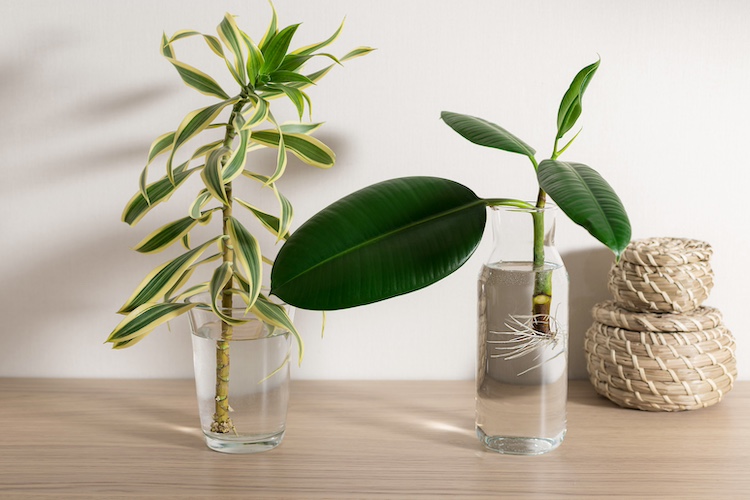Ficus (Ficus benjamina) remains one of the most beloved houseplants due to its lush green foliage and aesthetic appearance. Propagating Ficus through rooting is a simple and accessible way to expand your collection or gift loved ones a new green beauty. Modern technologies of 2025 (smart sensors, LED lighting, eco-friendly materials) help optimize the process and make it even more efficient.
Below are five proven methods for rooting Ficus with additional tips for achieving maximum success:
1. Rooting in water
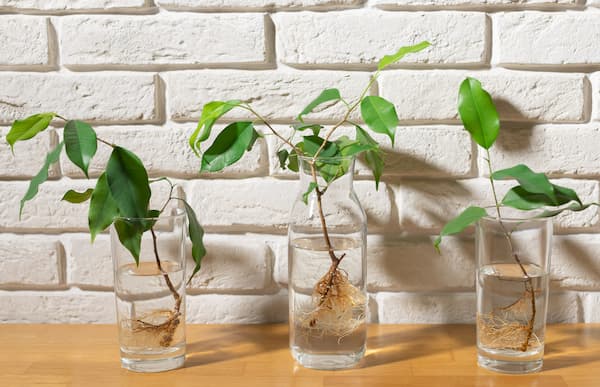
How to do it:
- Choosing a cutting: Select a healthy shoot or leaf with a stem from the lower part of the plant. Use a clean, sharp knife or pruner for cutting.
- Preparing the cutting: Cut the shoot to a length of 10–15 cm, removing the lower leaves while leaving a few upper ones.
- Placing in water: Place the cutting in a glass or clear container with filtered water. Modern aquarium systems and special pots with built-in water quality sensors can help monitor pH and purity.
- Lighting: Place the container in bright, but indirect sunlight. In 2025, popular full-spectrum LED lamps provide optimal conditions for root growth even in indoor conditions.
- Monitoring: Use smart sensors to monitor the water temperature (ideally 20–24°C) and its purity. Within 2–4 weeks, roots will begin to appear on the cutting.
Modern tips:
- Smart care: Use mobile apps for reminders about changing the water.
- Biostimulants: You can add a few drops of organic growth stimulant recommended by LED lighting system manufacturers.
2. Rooting in moist soil
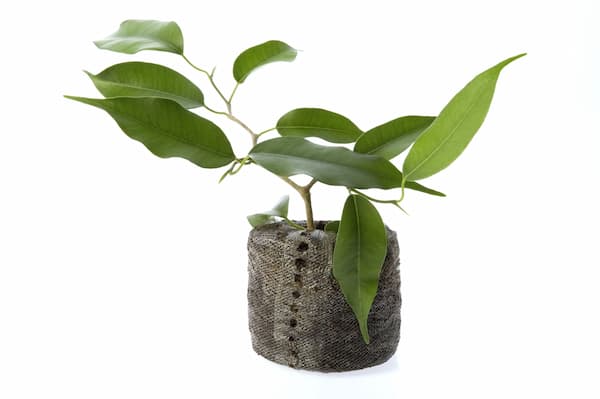
How to do it:
- Preparing the cutting: As in the previous method, select a healthy shoot of 10–15 cm in length. Cut it to ensure a clean cut.
- Soil mixture: Use modern rooting soil mixtures enriched with micro- and mycorrhizal organisms. These mixtures promote faster root development.
- Planting: Insert the cutting to a depth of 2–3 cm into pre-moistened soil.
- Creating a microclimate: Cover the pot with a transparent lid or plastic bag to create a greenhouse effect. Modern “smart” greenhouses with adjustable humidity will help maintain an optimal microclimate.
- Care: Place the pot in a warm location (20–25°C) with diffused light. Roots will begin to develop within 3–4 weeks.
Modern tips:
- Moisture control: Use built-in hygrometers or connected “smart home” systems that notify about changes in soil moisture.
- Eco-soils: Prefer eco-friendly, biodegradable soil mixtures.
3. Rooting with bark powder (or root gels)
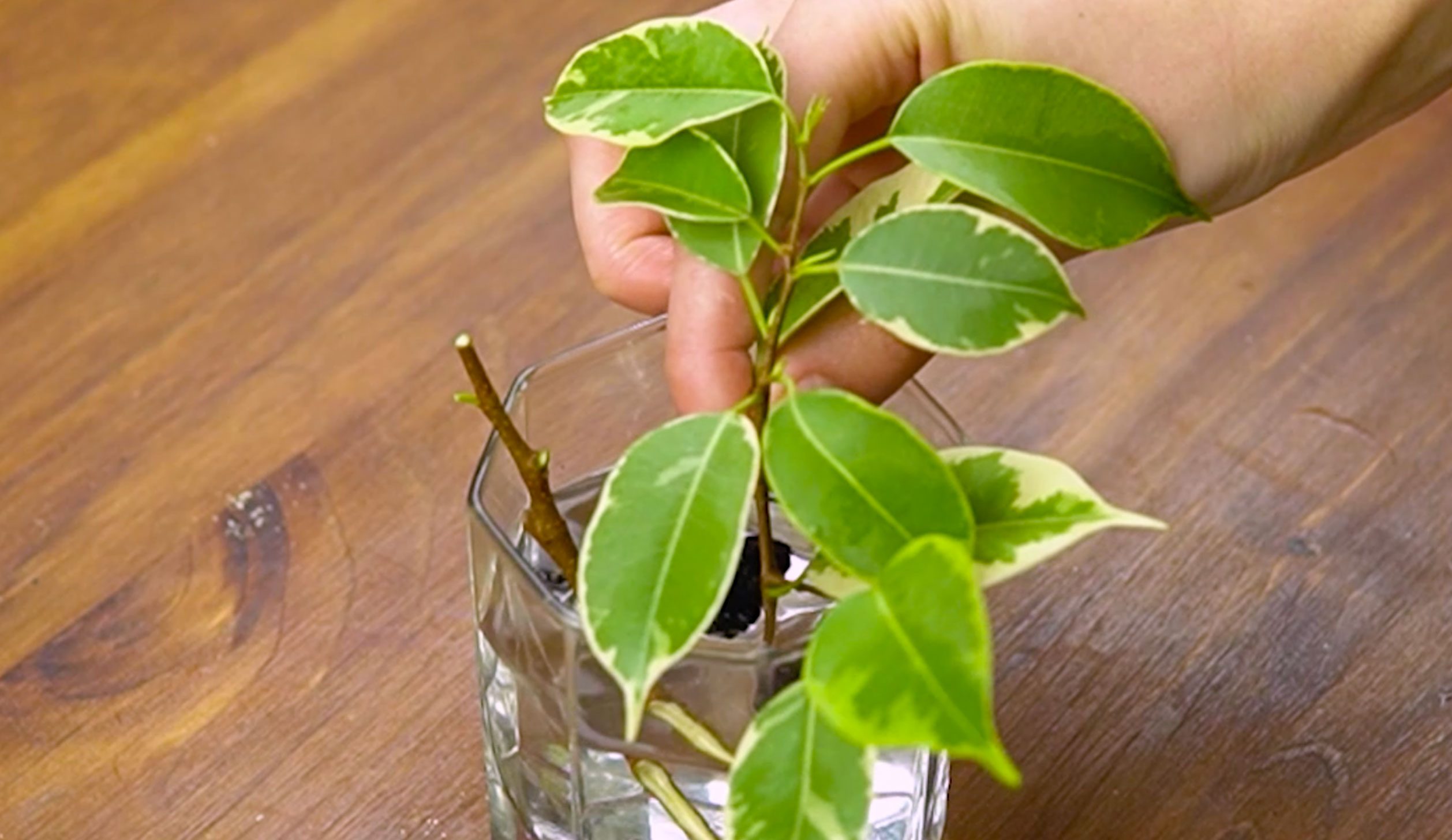
How to do it:
- Preparation: Make a clean cut of the shoot (as described above).
- Treating the cutting: Dip the tip of the cutting in water, then thoroughly dip it in a special bark powder or, according to modern trends, in a root gel with active ingredients (e.g., IBA – indole-3-butyric acid). These agents stimulate rapid rooting.
- Planting: Place the treated cutting in moist soil or a mixture of perlite and peat that promotes aeration.
- Creating optimal conditions: Cover the pot with a lid or film to maintain high humidity. Modern options have built-in sensors to monitor temperature and humidity.
Modern tips:
- Nanotechnology in gardening: Some manufacturers already offer nanoparticles in root stimulators that provide more effective rooting.
- Sterilization: Before use, treat tools with ultraviolet lamps to prevent fungal infections.
4. Rooting in a moss substrate
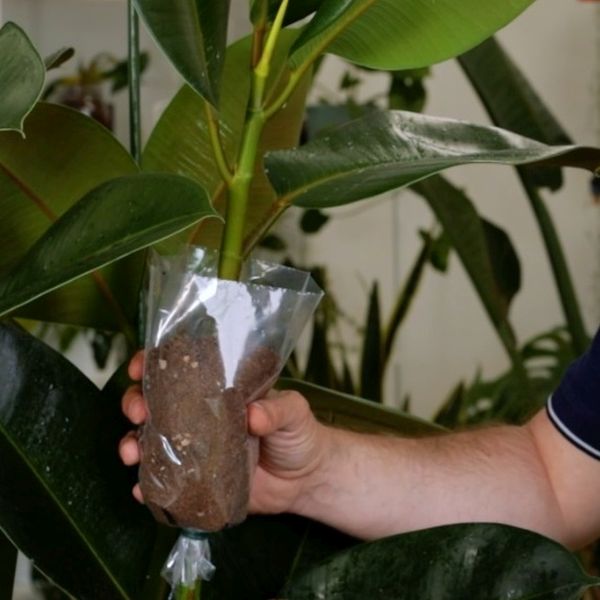
How to do it:
- Preparing the cutting: Select a healthy shoot, make a clean cut, and optionally lightly rub it (this may promote better contact with the substrate).
- Using sphagnum moss: Modernly, ecologically harvested and sterilized sphagnum moss is used, which retains moisture and creates a favorable environment for root buds.
- Planting: Wrap the cutting in moss, place it in a small pot or container, and then cover it with transparent film to create a greenhouse effect.
- Care: Periodically check the moisture of the moss (ideally ~80–90%). Modern “smart” pots can automatically adjust humidity.
Modern tips:
- Bioactive additives: Some manufacturers offer special additives for moss that promote root growth.
- Biodegradable containers: Use modern eco-containers that decompose over time, helping to reduce plastic pollution.
5. Rooting using aerial roots
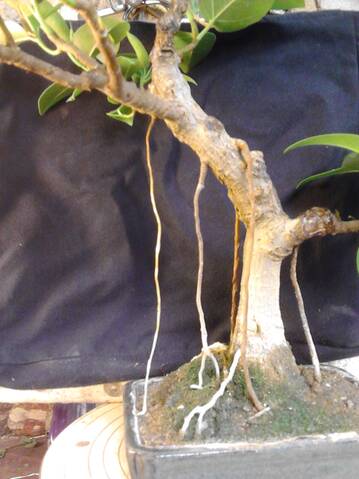
How to do it:
- Identifying aerial roots: Ficus naturally develops aerial roots that can eventually turn into live roots capable of rooting the cutting.
- Activating the root system: Carefully direct the aerial roots into the soil using thin special holders or biodegradable threads.
- Enhancing growth: Soak the contact point of the aerial root with the soil in water or apply a root stimulant (gel or powder). Modern systems even allow monitoring the root growth process through connected apps.
- Transplanting: When the roots begin to grow actively (usually within 3–4 weeks), you can carefully separate this shoot from the mother plant and transplant it into a separate pot with soil.
Modern tips:
- Innovative technologies: Use special “smart” pots with growth sensors that notify about the optimal time for transplanting.
- Nutrients: Try applying organic beneficial solutions containing trace elements to stimulate root system development.
Additional tips for successful Ficus rooting in 2025
- Optimal microclimate: Modern growing conditions largely depend on controlling humidity, temperature, and lighting. Use “smart” devices – hygrometers, thermometers, and LED lighting with adjustable intensity.
- Regular care: Remember that the success of rooting depends on regular watering (without overwatering), timely water replacement (when rooting in water), and monitoring the quality of the soil mixture.
- Protection from diseases: Before starting work, sterilize tools (modern ultraviolet lamps will help with this) and check the cuttings for damage. Additional use of organic fungicides will help avoid fungal diseases.
- Ecological approach: In 2025, more attention is paid to the eco-friendliness of methods. Choose natural additives, eco-friendly materials for pots and soil mixtures.
Conclusion
Propagating Ficus through rooting is an interesting and beneficial process that allows you to not only increase the number of green friends in your home but also create conditions for their healthy growth and development. Modern technologies and materials of 2025 significantly simplify this process: from using smart sensors to monitor humidity and temperature to LED lighting that provides optimal light spectrum.
Try different methods of rooting – perhaps one of them will be the most convenient for you. Experiment, make adjustments according to the tips, and enjoy the result – a healthy, lush Ficus that will be a decoration for any interior!
